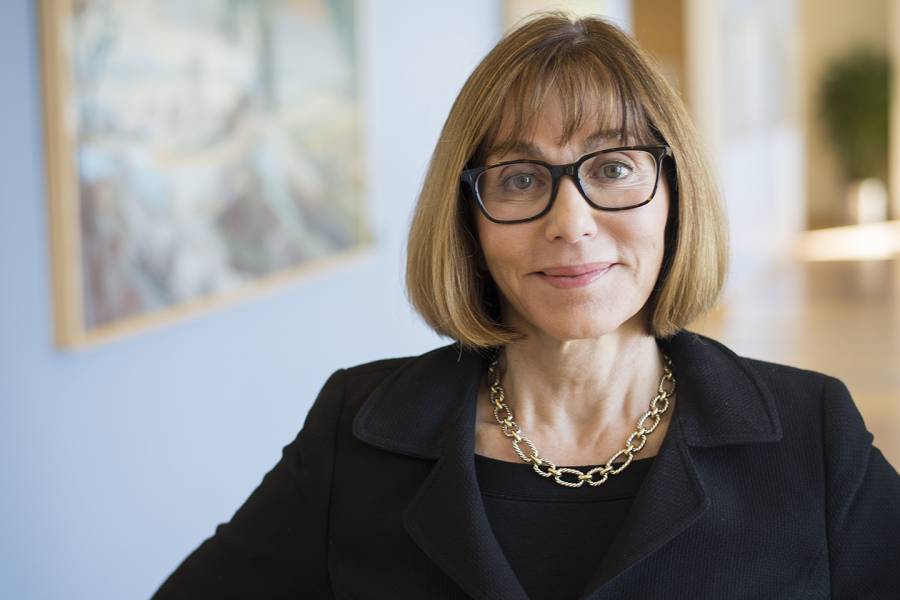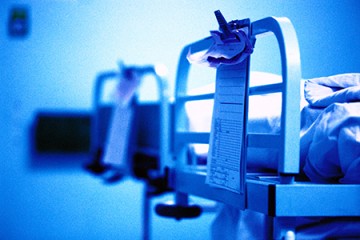Like many researchers who focus on patient safety, Kathleen Sutcliffe was drawn to the field for personal reasons. After a medical error contributed to the misdiagnosis and later death of a loved one, Sutcliffe began applying her expertise in organizational theory—how systems organize to achieve complex goals such as efficiency, productivity, quality, and safety—to the health care field. Since then, she says, the patient safety movement has evolved. But not, in all cases, for the better.
In a new book released this week, Sutcliffe, Bloomberg Distinguished Professor of organizational theory and patient safety at Johns Hopkins University, joins physician Robert L. Wears in an effort to examine the patient safety movement and understand why it has failed to deliver the gains promised over two decades of research, funding, and policymaking.
"Almost 20 years later, patients are still experiencing harm from the care they receive. In many ways we're facing the same problems over and over," says Sutcliffe, who holds appointments in the university's Carey Business School and the School of Medicine. "This book is an attempt to provide deeper insight into an important movement and to make it stronger through critical analysis."

Published by Oxford University Press, the book, titled Still Not Safe: Patient Safety and the Middle-Managing of American Medicine, provides a history of the movement that first vaulted to national media attention after a report was leaked from the Institute of Medicine (now the National Academy of Medicine) in 1999. Sutcliffe and Wears, a Johns Hopkins alumnus who died in 2017, offer a diagnosis for its failures and a roadmap for its future.
"One of the overarching questions that guided our work was, How do you critique a movement you care deeply about without undermining it?" Sutcliffe says. "That's really where we were coming from. The view that the patient safety movement has been misled is not a popular one, but we think that viewing the work through a critical lens can be fruitful. We want to—and we can—make things better, and we think that requires a more critical analysis than is being done currently."
Some of the problems Sutcliffe and Wears diagnose in Still Not Safe can be traced to fundamental shortcomings in how patient safety is studied.
The first flaw, Sutcliffe says, is that there is an absence of consensus in the field about what's being studied. "For example, research shows that there is little agreement on what preventable harm actually is or what constitutes an error," Sutcliffe says. The underlying data about adverse events—incidents in which a patient is harmed by a medical error or otherwise preventable situation—can be misinterpreted. The second flaw is that data collection methods commonly used in the study of patient safety are subject to hindsight bias, where knowledge of the outcome affects how someone views the incident and its causes.
"When we're trying to measure medical errors to understand preventable harm, what we've seen is that our knowledge of the outcomes of those errors—the consequences—affects our judgment on whether or not we view it as an error or preventable in the first place," Sutcliffe says.
The patient safety movement has failed to adequately address these issues, Sutcliffe says.
From an organizational standpoint, health care institutions have largely adopted a system of accountability and transparency that may in fact deepen the problems within the patient safety movement, Sutcliffe says. Although some institutions have worked to create "blame-free" cultures over the past decade, there is still a tendency to place blame for adverse events on the workers on the front lines who are closest to the problems. This tendency creates an environment where workers are less likely to report adverse events when they occur. Moreover, these workers are also less likely to report structural problems they encounter within the system, effectively blinding the organization to its own shortcomings.
Similarly, hospitals that broadcast their rates of adverse events or days without harm in the name of transparency also increase the likelihood that workers will be discouraged from reporting mistakes, to avoid the shame of being the person who compromised the organization's statistics. These organizational structures, Sutcliffe says, disempower the very people who can provide the knowledge on how to adapt and protect patients.
The fact is, Sutcliffe says, those on the front lines of care intervene in countless ways to prevent harm. "Medical professionals are probably making errors throughout their work that they're able to catch and correct, making the system more resilient," Sutcliffe says. "But the study of patient safety hasn't begun to examine what goes right."
She says patient safety scientists should learn from other high-risk industries such as aviation and wildland firefighting to understand how to adopt strategies that promote resilience and emphasize what works. To that end, Sutcliffe and Wears suggest in Still Not Safe that the field of patient safety needs to diversify. As the research field has grown, they argue, it has increased the concentration of medical professionals within its ranks, and that consolidation around medicine edges out safety scientists from other fields such as engineering and psychology who could diversify the thinking and approaches to patient safety.
"The risk of homogeneity in the field is that people with good intentions become unquestioning of the prevailing orthodoxy," Sutcliffe says.
Sutcliffe's views—presented in the book and in an accompanying op-ed published in Time—are already making waves within the patient safety community. Allen Kachalia—director of the Armstrong Institute for Patient Safety and Quality at Johns Hopkins, where Sutcliffe holds an appointment—thinks that's a good thing.
"Professor Sutcliffe is right when she says progress in patient safety has been too slow," he says. "Those of us in safety and quality improvement should welcome differing opinions, even the controversial ones. That's how we get better."
Adds Denis Wirtz, vice provost for research at Johns Hopkins University: "Scientific inquiry is strengthened by applying different perspectives to a complex problem. At an institution as large and diverse as Johns Hopkins, we benefit from having experts from nearly every field who can apply their lens to sharpen other lines of inquiry and raise novel questions. There are bound to be different approaches and ways of thinking about a problem, especially one as central to health care as patient safety, so this is an important conversation for us to have."











